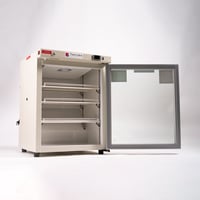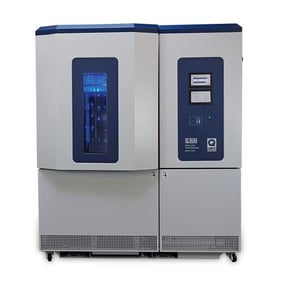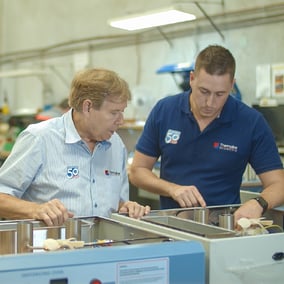
In the battle against infectious diseases, vaccines have proven to be one of the most effective tools for prevention. However, the efficacy and safety of vaccines depend not only on their formulation but also on how they are handled, stored, and distributed. Strive for 5 emphasises the importance of maintaining strict temperature control during vaccine storage. In this blog, we will look at the significance of Strive for 5 and how proper vaccine storage practices contribute to successful immunisation programs worldwide.
Understanding Strive for 5:
Strive for 5 meets the requirements of the World Health Organization (WHO) requirements that aim to ensure that vaccines are stored at the required temperature with a minimum of 2°C and a maximum of 8°C with 5°C being the middle temperature. The Strive for 5 publications are the national vaccine storage guidelines for use by Australian immunisation service providers. For Thermoline, as a supplier of vaccine storage refrigerators and other refrigerated products, these guidelines serve as a baseline of what we supply our customers.
Why is Strive for 5 Important?
1. Vaccine Potency: Vaccines contain weakened or inactivated pathogens or specific antigens that trigger the body's immune response. Maintaining vaccines at the appropriate temperature range is crucial to preserving the potency of these active components. Exposure to temperatures, particularly low temperatures, outside the recommended range can lead to the degradation of vaccine efficacy, rendering them ineffective.
2. Vaccine Safety: Temperature deviations can also compromise vaccine safety. For example, inactivated vaccines may contain preservatives to prevent bacterial growth. However, exposure to higher temperatures can reduce the effectiveness of these preservatives, increasing the risk of contamination and adverse reactions.
3. Immunisation Success: Successful immunisation programs depend on the ability to deliver vaccines that are potent and safe. Maintaining the cold chain - the process of keeping vaccines within the required temperature range from the point of manufacture to administration - is crucial to ensuring that vaccines retain their efficacy and are safe for use.
Challenges in Vaccine Storage:
Maintaining the cold chain for vaccines presents numerous challenges, particularly in resource-limited settings and remote areas :
1. Lack of Infrastructure: Some regions lack the necessary infrastructure, such as reliable electricity supply or refrigeration facilities, to store vaccines at the recommended temperature.
2. Temperature Fluctuations: Inadequate temperature monitoring during transportation and storage can lead to temperature fluctuations, potentially compromising vaccine integrity.
3. Remote Areas: Reaching remote and isolated communities with temperature-controlled vaccine storage facilities can be logistically challenging, making it difficult to maintain the cold chain.
4. Power Outages: Frequent power outages or lack of backup power sources can pose a significant risk to vaccine storage, especially in regions with unreliable electricity supply.
Best Practices for Vaccine Storage:
To ensure vaccine potency and safety, healthcare providers and immunisation programs must follow the best practices for vaccine storage:
1. Cold Chain Management: Implementing a robust cold chain management system that includes temperature monitoring, regular maintenance, and contingency plans for emergencies is essential.
2. Proper Refrigeration: Use purpose-built vaccine refrigerators and freezers designed to maintain a stable temperature range of 2°C to 8°C or lower for specific vaccines, such as those requiring ultra-low temperatures.
3. Temperature Monitoring: Continuous temperature monitoring using digital data loggers or temperature-sensitive indicators helps identify temperature deviations promptly.
4. Proper Packaging: Ensure vaccines are stored in their original packaging and avoid overcrowding refrigerators or freezers to maintain adequate air circulation.
5. Staff Training: Properly train healthcare staff involved in vaccine storage and handling to ensure adherence to best practices and awareness of the importance of temperature control.
6. Cold Chain Transportation: Use insulated vaccine carriers and cold boxes during transportation to maintain the recommended temperature range using data loggers to ensure that this occurs.
Conclusion:
Strive for 5 underscores the critical role of proper vaccine storage in preserving the potency and safety of life-saving vaccines. By maintaining vaccines at the recommended temperature range of 2°C to 8°C, healthcare providers can ensure that vaccines remain effective and safe for use, protecting individuals and communities from preventable diseases. Strive for 5 provides Australian immunisation providers with an excellent reference tool.
If you have any questions, please contact the Thermoline customer service team.






